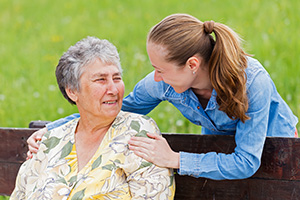 Urinary tract infections (UTIs) are a common occurrence. According to the Centers for Disease Control, UTIs account for about 4 million visits to outpatient healthcare facilities each year in the US.*
Urinary tract infections (UTIs) are a common occurrence. According to the Centers for Disease Control, UTIs account for about 4 million visits to outpatient healthcare facilities each year in the US.*
UTIs result from bacteria that enter and latch onto the urinary tract. 80%–90% of infections are caused by E. coli, bacteria that normally live in the colon.** UTIs are diagnosed by a urine test performed by a healthcare professional.
Some UTI symptoms include:
-
Fever
-
Urgency
-
Side or flank pain
-
Inability to urinate
-
Shaking chills
-
Frequent urination
-
Blood in the urine
Remember to consult your physician if you think you might have a UTI.
Antibiotics are often used to manage UTIs, although even when treated with antibiotics, there’s a high rate of re-infection. By 4–6 weeks, 50%–70% of individuals treated for a UTI will again have positive urine cultures.***
If left unmanaged, UTIs can result in the following:
-
Urgency or difficulty urinating
-
Confusion and falls
-
Pain and depression
-
Decrease in daily activity due to fatigue, pain and urgency
-
Increased metabolism and decreased appetite
-
Antibiotic use
-
Further infections
-
Skin breakdown and skin infection
-
Hospitalizations
Medical foods, such as UTI-Stat, are another way to manage UTIs. Just 1 fl oz of UTI-Stat contains five key ingredients that have been clinically shown in two trials to manage UTIs. UTI-Stat’s five key ingredients offer these strong benefits:
-
Cranberry Concentrate and D-Mannose – Interfere with bacteria sticking to the urinary tract wall
-
Vitamin C and FOS – Slow the spread of harmful bacteria
-
Bromelain – Helps manage the body’s normal inflammatory response
If you’re interested in learning more, click here to find out about how UTI-Stat can help manage your urinary tract health.
*http://www.cdc.gov/ncidod/dbmd/diseaseinfo/urinarytractinfections_t.htm
**Ejrnæs K. Dan Med Bull. 2011;58(4):B4187.
***Nicolle LE. Clin Infect Dis. 2000;31(3):757-61.
